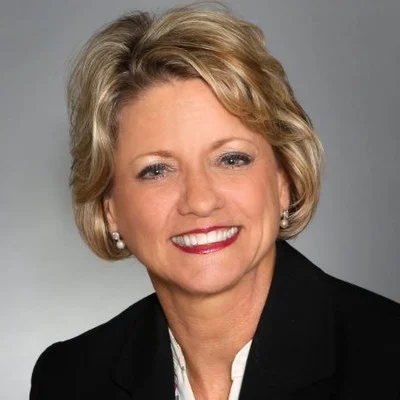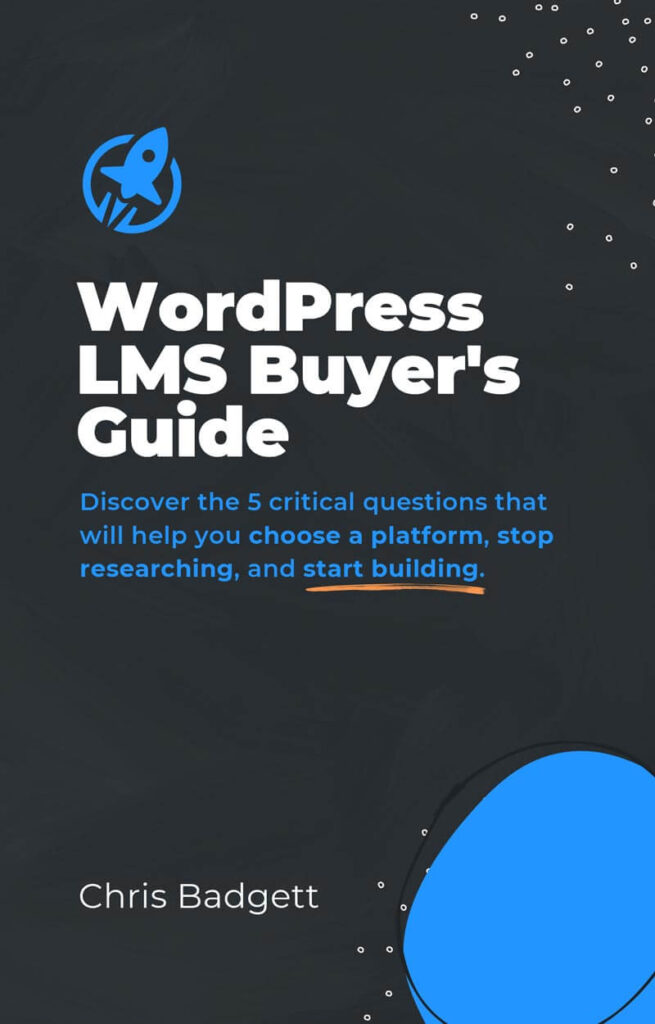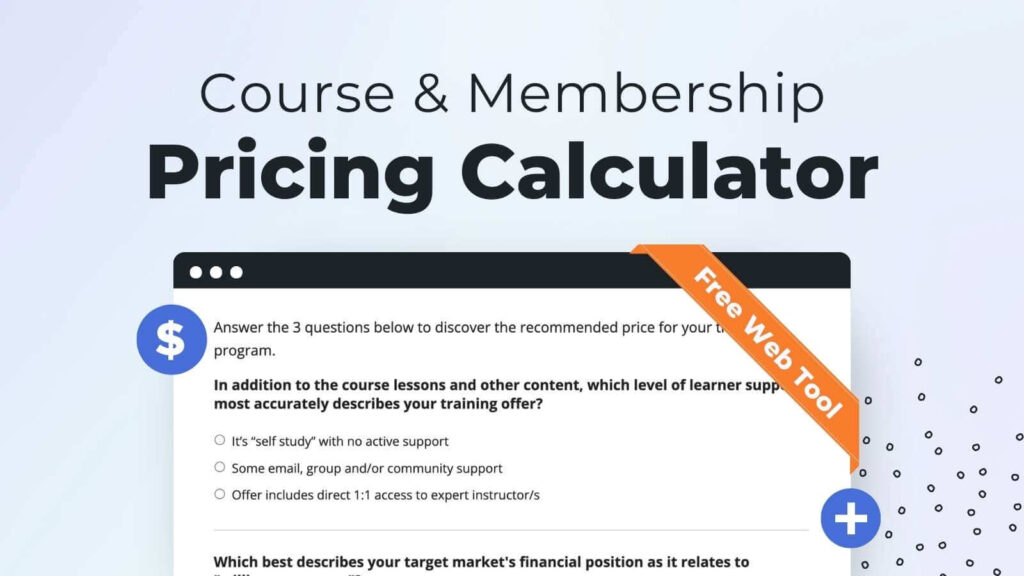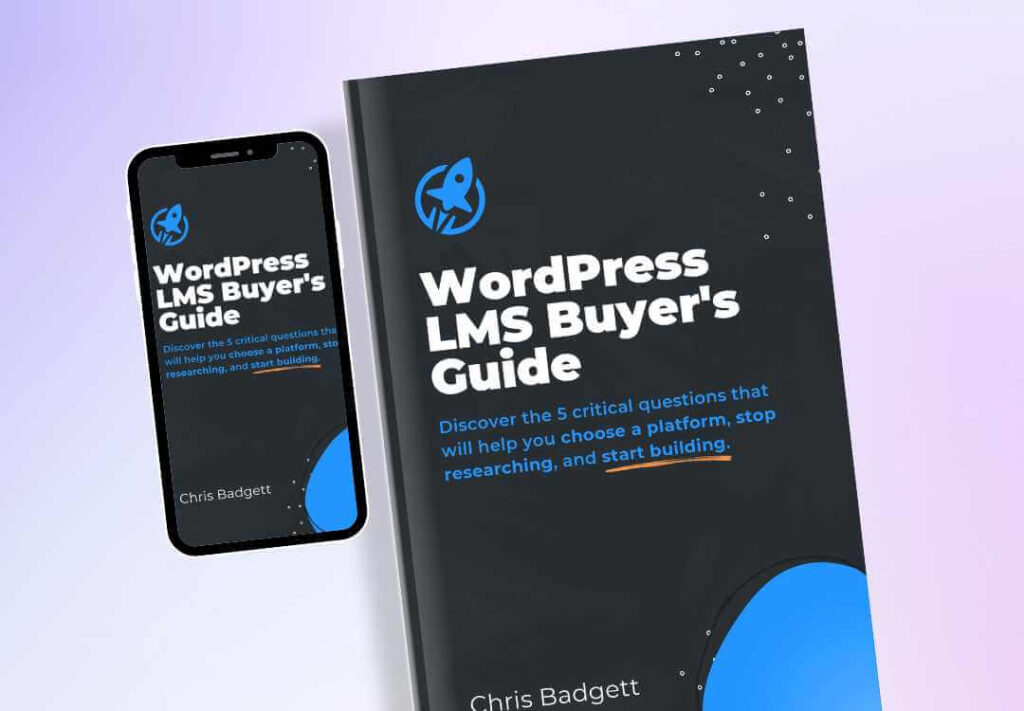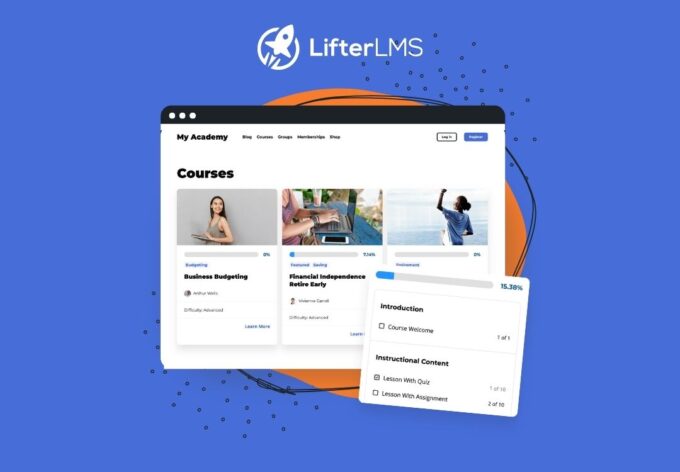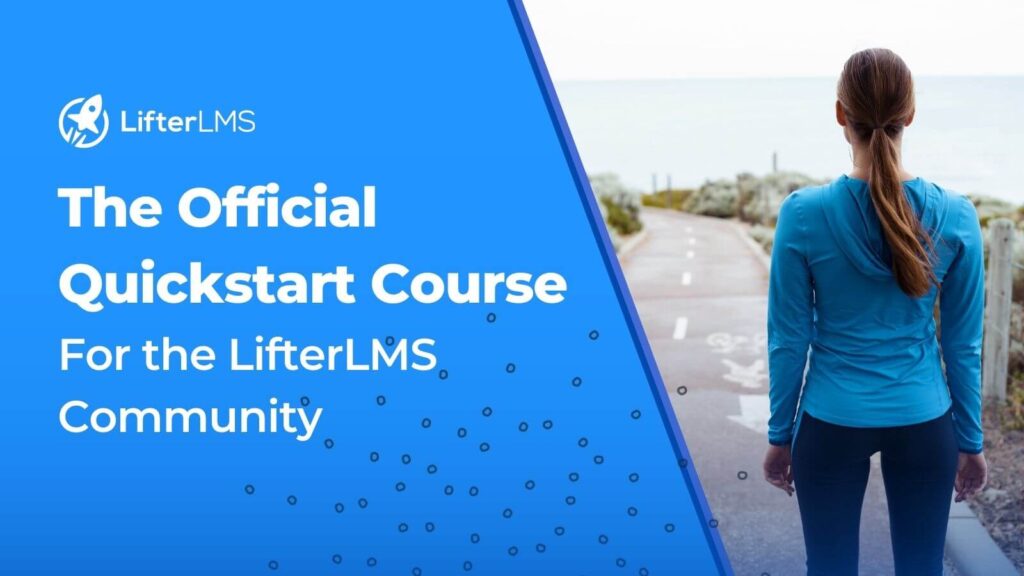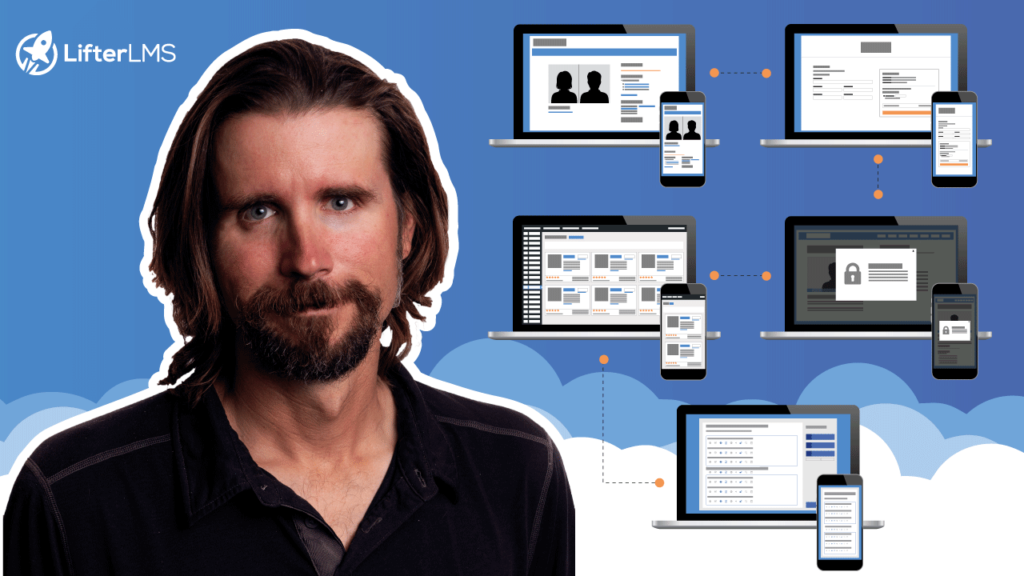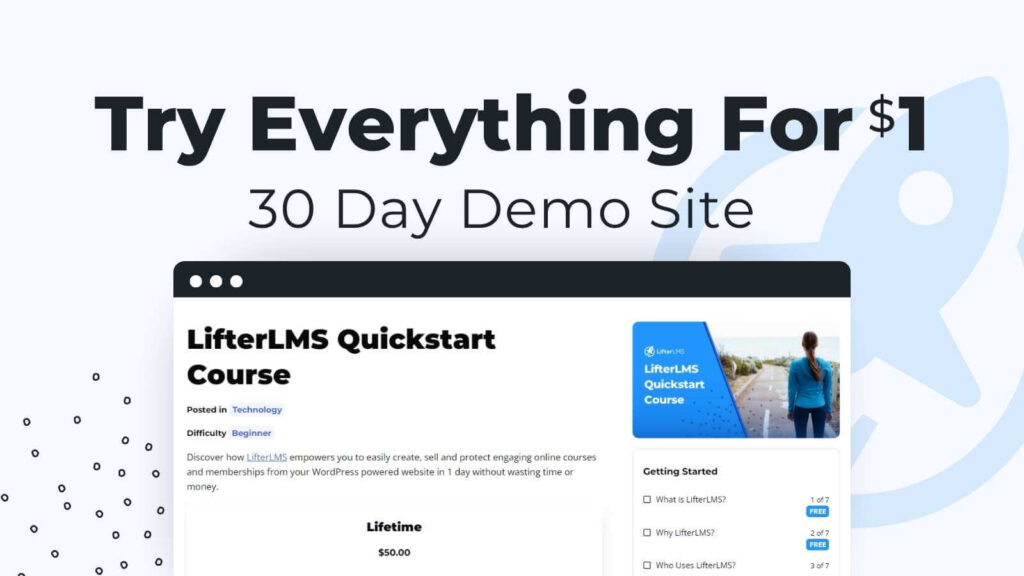In this LMScast episode, Barbara Thomason shares insights about social-emotional learning (SEL) within the niche of preteen education and development.
Barbara Thomason is a social-emotional learning (SEL) specialist and the creator of Joy Circles, an initiative that helps preteens build confidence and vital life skills. Barbara also talks on the unique difficulties preteens have in today’s world, emphasizing how incidents like the COVID-19 epidemic affect their mental and social health.
She highlights the need of specific programs and qualified facilitators in this specialty to help preteens navigate these difficulties and acquire critical SEL skills. In talking about the Joy Circles facilitator certification program, Barbara lists the perfect candidates in the niche, which includes school social workers, guidance counselors, and anyone with the empathy and communication skills needed to help preteens in their SEL journey.
In response to the niche’s need for current and easily accessible information, Barbara decided to make the facilitator training program available online. She makes sure that her curriculum reaches a large audience of educators and facilitators committed to promoting the social and emotional development of preteens by utilizing online platforms such as Lifter LMS.
Here’s Where To Go Next…
Get the Course Creator Starter Kit to help you (or your client) create, launch, and scale a high-value online learning website.
Also visit the creators of the LMScast podcast over at LifterLMS, the world’s leading most customizable learning management system software for WordPress. Create courses, coaching programs, online schools, and more with LifterLMS.
Browse more recent episodes of the LMScast podcast here or explore the entire back catalog since 2014.
And be sure to subscribe to get new podcast episodes delivered to your inbox every week.
2023 WordPress LMS Buyer’s Guide
Exclusive Download! Stop wasting time and money researching online course and membership site tech.
Episode Transcript
Chris Badgett: You’ve come to the right place. If you’re looking to create, launch, and scale a high value online training program, I’m your guide, Chris Badgett. I’m the co founder of LifterLMS, the most powerful learning management system for WordPress. Stay to the end. I’ve got something special for you. Enjoy the show.
Hello, and welcome back to another episode of LMS cast. I’m joined by a special guest. Her name is Barbara Thomason. She’s from joy circles. com and she helps facilitators and the people that are helping help preteens with self confidence. Reading all kinds of skills, but first welcome to the show, Barbara.
Barbara Thomason: Thank you, Chris. Thanks for the invitation to come share.
Chris Badgett: Yeah, I’m so excited to chat with you today. It’s cool to build an online business, but it’s also, in my opinion, even better to create a positive impact in the world. Tell us, let’s get to the root of it. What is social emotional learning, which is part of the joy circles program?
Barbara Thomason: Sure. Social emotional learning has an acronym like a lot of things do. So I may refer to it as S E L and social emotional learning has been around actually since the sixties, but has had a recent rebirth out of need. Mostly. Some people think of it in terms of character development but I prefer the SEL moniker because it’s more descriptive of what happens.
It is a child learning to understand better their own emotions, understanding themselves and how they interact with others. It helps them as they move into those very special developmental stages and how they interact with the wider world. So it essentially better prepares them for the world of, work.
world of relationships. So it’s very important and important that educators learn to recognize its importance.
Chris Badgett: So what happens? I like to keep it positive. But what happens when there’s stunted development and social emotional learning? Like how? How does it play out or and create challenges in a child’s life?
Barbara Thomason: I think it’s been obvious in recent years because what we’ve noticed has been the result of, COVID isolation when when young ones have not had the social interaction. They struggle a little bit with coming back in to society in learning situations and in working with the team and collaborating.
They tend to become very techno dependent. And I think that it takes time to begin to assimilate back into their, age group. Social and emotional skills are critical for academic learning. A young one who isn’t really comfortable with themselves and each other must be comfortable.
They have to be comfortable with themselves in order to be able to be comfortable with learning. And research bears this out that young ones who score high, I guess you could say on SEL make greater gains in the academic areas, such as math and reading and sciences. So it’s, just very important for all over development.
Chris Badgett: You mentioned like a scoring system or what, types of, what are examples that would cause a higher score in SEL?
Barbara Thomason: I’ll speak to a specific series of studies. There is a, Dr. Gerlach and some of his research has been most cited. And what he found is of course there were certain gains after social emotional learning.
I think he looked at several hundred. SEL programs of different types. And of course, the children that were exposed to SEL learning, as opposed to control groups, certainly saw gains in social emotional learning parameters, but What they didn’t expect, but they did see, was an 11 percent increase in academic gains.
That was rather amazing, and a wonderful finding, because what that communicates to educators is that it is worthwhile to spend instructional time on social emotional learning, because it’s a, Wonderful expenditure of time with a payout at the end for academia.
Chris Badgett: Awesome. I love the name joy circles. Tell us about the name and the circles.
Barbara Thomason: That was both inspiration and I guess you could say a little bit of science too. There are a couple of researchers and of course their names have escaped me, but I have their book on the shelf that produced programming called the circle way.
And they have programs around the world that are a lot of them for adults and they have. Shown how important the circle is, that is putting people in circles. And of course they go back to almost prehistoric times to demonstrate how circles are used in adult gatherings and how, when you put people in a circle, everyone is on equal footing.
Everyone has a say, everyone is heard. And so this concept. It was extremely important to me in that when you enter into the whole process of social emotional learning, it’s important that you establish a circle in order for children to build trust with whoever is working with them and in facilitation you might notice that.
Whether it’s therapists or school counselors, when they’re dealing with a child who may be unregulated or in trauma, they tend to get down on the level of the child. They may kneel down or even sit down eye to eye with the child. It’s the same concept with Circles, everyone is seated on the floor or if, excuse me, if everyone is in a chair, so is the facilitator.
So everyone is equal. Everyone is heard. There are activities within the program that enable the circle to really be born out. There’s movement to music. So we’re doing that in a circle. There are times based on Cliff Derby’s program called Heart Talk, where you have a heart and you pass it around the circle and whoever is holding the heart has the privilege to speak at that moment about their deepest feelings.
So that is a use of the circle as well as there are other things, of course, that we do within the circle, but the use of the word circle is, very critical. Joy, of course, I think is inherent in, the name of the program because that is intended ultimate outcome. It was a perfect marriage of, two concepts really to create this program.
And I have to say it was somewhat divinely inspired.
Chris Badgett: Awesome. Yeah. I love that. Love the name and the backstory there. You mentioned therapists and perhaps guidance counselors and educators before who is the best fit for the joy circles facilitator certification program. Cause you’re, going to the educator, not directly to the student.
Who are, who is, who’s the best fit?
Barbara Thomason: That is, that’s a great question because I think there are personal and skill characteristics that make the best facilitator, not necessarily a job title. So there may be someone without all of those credentials that could be a gifted facilitator. Like a camp
Chris Badgett: counselor, perhaps.
Barbara Thomason: Yes it could be someone without an advanced degree. It could be someone with an associate’s degree. It could be someone with no degree. Although that’s, I think, a little tougher to establish, but if I were to go into, a school district, I would most likely start with guidance counselors simply because they are most likely to get it most easily get the concept.
The school social worker is most likely to understand this. For the most part, they’ve had probably. 25 to 35 to 50 percent of the learning that I am offering in the facilitation program. For them, a lot of it is repeat or review for them. So they are wonderful candidates for this program. Teachers, only if maybe they they’re in a special situation where they have instructional time to do it and they have the skill sets and understanding.
But for the most part, they are very focused on the instruction, the area of instruction that they are required to deliver. And they’re usually under a lot of stress to deliver it. And that’s not a good place to be in order to deliver joy circles and social emotional learning.
Chris Badgett: All right. Tell us about the desire to and the story of putting this online and how you made it to the point where you wanted to have a website for this and, create the online certification program for the facilitators.
Barbara Thomason: The, Joy Circles program itself, the, what is delivered to the children, of course, is not online, that is a live program, but it was important to me that the facilitator training be available really around the world certainly across the nation, so that the program could be delivered Widely as quickly as possible.
So that was the way to do it was to, place it online and make it easy, easily accessed and make the interaction between those of us that deliver the program as impactful as possible and make it. Self paced for the learner as well as we could punctuate this, class with periods where we could have live sessions.
So built into it, or a couple of times when we would have what you might call check in sessions and coaching sessions with those that are going through the program. And at the very end, there’s a capstone session where they would do a practice facilitation with a live group but it was important to be able to, deliver this in a widespread way.
It’s also wonderful to be able to edit the program as we go. I attended a all day conference yesterday delivered by the Texas Teacher Counseling Association and went to a number of wonderful workshops and got some great content and thought as I came back yesterday, I need to put that in my, facilitation program so I can go in and edit.
Happily change the program and it’s, done I don’t have to go back to a printer and have a lot of expense, have any expense at all to make those edits.
Chris Badgett: Tell us about the instructional design aspect of it. Like how did you figure out how to structure? The course and the content, and you said that it’s awesome that you can make it better as you go.
But how did you 1st encapsulate the program?
Barbara Thomason: Well, a little spoiler alert. I, have a master’s degree in human resource development. I know a little bit about instructional design and training and development. But I had never created a course and put it online. You guys make it easy.
This drag and drop simplicity the training courses that you all provide it’s hand holding all the way. And I it just made it, it just made it painless. I did it over the Christmas holidays, essentially, and and knew, of course, that as I went along, I could just slide another lesson in or slide another unit in as I went along.
It was. It was so much easier than I thought it would be. So thank you.
Chris Badgett: You’re welcome. I’m, glad that makes me happy. What was your experience with WordPress or getting into the tech of it all? Cause it, it’s not always easy. WordPress is infinitely customizable, but what’s your WordPress journey?
Barbara Thomason: I have a webmaster. And they’re the WordPress experts. In fact, they’re the ones that they gave me a list of 3 LMS companies and you all were 1 of them. And so I reviewed the 3. I ended up with you all. I’m glad I did. I always knew that I had. A fallback. I could go to my web master people and they could save me if I screwed up.
But it was, you just appeared on WordPress it was like, I didn’t know it was going to happen. And there you were. That’s how dumb I was about WordPress. I just found you there and just started clicking around. I could find what I needed just by clicking on courses. And it was easy to find.
And I, found that I didn’t mess up my website or anything. Yeah it was great.
Chris Badgett: That’s awesome. Do you remember, you said you were looking at three different LMSs. What, ultimately led to choosing LifterLMS?
Barbara Thomason: I can’t remember all that went into the decision. I will tell you that I think it was the support that you provide.
Certainly the, instructional support, the fact that we can call on you any, time I think that you were, you had a special going on and it was around Thanksgiving. That certainly helps. Everybody likes a, deal. I think you enabled me to try it, I don’t think I did.
I think I just signed up all the way at the beginning. There were probably other things. I think I liked the look the look and feel of LifterLMS sites. Certainly there were good testimonials there, there really wasn’t any reason not to sign up with you all. And some of the other sites gave me pause.
Chris Badgett: Okay. Here’s a question for you that we get asked a lot for it. It’s one of the reasons we have this podcast. It’s outside the scope of the software, but. How do you get clients or how do you, get facilitators interested in the program and get the message out there?
Barbara Thomason: That’s been tough. This is, I’m a new launch, so my best way is for example, going to a conference, a professional conference yesterday. I reach out to school districts one by one and attempt to make appointments either with. An instructional leader whoever’s heading up the counselors and just have that conversation, see where they are in their SEL programming.
We talk about who would be ideal facilitators just that sort of thing. It’s just the outreach. I also have an e newsletter. And so I have a pretty robust list of schools across the state of Texas right now. So reaching out to them through my e newsletter, which is quarterly. I had an info webinar in January and invited quite a few people to that.
So it’s just a lot of those, ways that, you outreach to your publics.
Chris Badgett: Thank you. I call that the ground game. You have to get out there and yeah. One conversation at a time. You mentioned checking in with districts on where their cell programming is. Is it already kind of part of the flow where, it’s educational institutions have some kind of social, emotional learning mandate or process and flow, or is it sometimes a new thing for a school?
Barbara Thomason: This is tough for me to answer because I don’t want to be negative.
Chris Badgett: a circle on the online right.
Barbara Thomason: Now, having said that I met a wonderful ones.
Program creator, former professor yesterday who has a high school program, which is partially online. And I think that’s perfectly wonderful. As long as they do have the live component, but, I would say that there are many other states that are head and shoulders above my state, the state of Texas, and I’m afraid that we fall far behind.
Many of the administrators, superintendents still view social emotional learning as something that steals away from academic instructional time. They’re not familiar with DURLAC study and, others, and don’t realize the importance, especially in this post COVID time. And I do my best to educate it. I’m just one just one person, but.
I’m hoping that over time they will see the benefit of it. Some of the programs that I saw yesterday especially those that are online just don’t seem to me to be impactful and they’ll, say that they’re evidence based, which is the key word in, social emotional learning, but they can throw that word around without.
Necessarily having to prove it. I think that it just depends on, what school district and what state that you’re walking into as to how far they have come with social emotional learning.
Chris Badgett: For the other folks trying to impact within the educational system, who is, who’s like the decision maker on the program that you mentioned districts, but then there’s individual guidance counselors.
Is it more likely the kind of district lead gets buy in and then encourages their staff to join? Or is it more likely a. Specific guidance counselor, as an example that gets really into it. And I call that land and expand and then others start getting interested, which is a top down or bottom up.
Barbara Thomason: That’s the question. That’s what, how is going to respond? It depends on if it’s top down or bottom up. Sometimes a new superintendent comes into his position and wants to make his mark. And if his mark is one that is pure academics, then social, emotional learning may go by the wayside.
And, that’s what I have seen in the very district I’m sitting in. While another may be one that is very open to listening to his professional staff and we’ll take their recommendations and if they believe strongly in a, sound social emotional learning program, then he or she will say let’s, invest in it.
So it just depends on what kind of leadership is there and how willing they are to listen and take a try on a program.
Chris Badgett: Awesome. You mentioned creating impactful training. What are some examples of how to make the facilitator training more impactful than let’s say other things that are out there and with your background as a facilitator and instructional designer, how does one do that?
Barbara Thomason: I think that in addition to having good content and one of the things that, that I try and do, it’s not always the fun part is, having sound. Resources and insight the sources, but to also have use your tool for what do you call them? It’s like homework and use the tool for creating quizzes.
And so, you’re getting feedback for each unit or lesson if you choose to do it that way so that they’re really assimilating that information and trying themselves out on it. I think too, the more that you can have. more interaction during the learning, the better it can be.
So, an example might be a lesson assignment where they join together with one or two other learners to work on a project, a group project, or they have to go out and do some research on their own and report back on that. Something that’s a little more interactive than just reading and spewing back information I think is, going to be more impactful.
Knowing too that the learning is something that is going to make a difference in how they perform. On the job. And I think just pointing that out throughout the lesson, for example, giving them tools on how to work with the child who may lose control. During a session and why they are that way and tools that they can use to, bring that child back into into self control, those kinds of things.
Chris Badgett: What’s an example of a tool like that? Where the child loses control and how can you
Barbara Thomason: help? There’s a model and I’m not going to go into the model, Chris, because it’s, not an attractive model, but it’s called the polyvagal theory. And it basically shows where we move neurologically in our brain.
where we start out maybe feeling pretty good and we’re in a certain part of our brain and then we go into the flight or fight, fight or flight mode or freeze mode and call that our reptilian brain. And that’s where a child goes if they may be a child who has been subjected to abuse or neglect or any other form of trauma, they go there more readily, and through acts of, ensuring trust and so forth, you can move them from that part of their brain into a more calming place.
There was a strategy I learned yesterday, and just I’m going to build this into my program. A lot of parents learn how to conduct time out, right? A child who has been neglected. or abused, time out would be very problematic for them because what they, don’t need to be felt like they’re, rejected.
They need to be brought in and, feel closer and connected to. A trusting human being so this particular theorist called it time in and I just thought it was a beautiful thing. And she demonstrates how she brings the child who has acted out in to a chair fairly close to her.
She continues to do her thing whether it’s grading papers or, cleaning up at a sink or whatever, and allows the child to maybe do some art or something, but be thinking about how he or she might have performed that behavior differently, not decide what you did wrong, but how might you have done that differently if you had a do over and, then when you have decided that when you figured that out, just say, I’m ready.
And then when the child says, I’m ready, then get down on their level, I level and hear what they have to say. And it’s just great. Let’s try it that way. And I just thought that was a beautiful strategy to bring maybe a child that is high emotionality down to a calm level where they can move from that.
Panic area of their brain to calm thinking logical area of their brain and have learning take place So I just thought that was a beautiful strategy. I’d never heard before yesterday time in I love that.
Chris Badgett:Where does your passion and motivation come for this subject matter and impact you want to make in the world?
Barbara Thomason: It’s funny when this lightning bolt inspiration came to me, I did not want to do this. I’ve had businesses before. I didn’t want to do another one. It was like. No, thank you, God, I don’t want to do this, but it just wouldn’t leave me alone. The day that my daughter was born, and this was pretty long time ago, it was a little over 40 years ago, when I brought my daughter home from the hospital, there was a front page article about a little boy named Tommy Lott, and Tommy Lott had been, had a long, he was probably only 5, 4, 5 years old, but in his short life, he had been really tortured and abused.
And the front page article was that Tommy Lott had been killed by his parents, essentially, by being scalded in hot water. And this horrifying story, the day I brought my sweet baby home from the hospital, Sat in my gut and influenced a lot of what I did. I volunteered for a child child abuse prevention agency for years.
I worked directly with child abuse At risk families I almost became a social worker at one point and decided I didn’t want to have my career fall into that area. It’s too depressing, but anyway, Tommy Lott has been in the back of my mind off and on throughout my career and I.
I have gone on to do other things community development work, economic development work. It’s all been very gratifying, but but, kids are where it’s at and I’ve never wanted to be a teacher. I’ve never wanted to work in a daycare. I’ve never wanted necessarily to have that direct contact.
It was enough to be a mom, but but I have this creative motivation to create and this is the facilitator program guide that they work from create the program and maybe have a little wider impact than I would have just working for the classroom or was always something appealing to me.
And I felt would have would make a difference. It would make a difference in the world. So that’s my motivation. Tommy lot.
Chris Badgett: That’s fantastic. Barbara. For those of you listening, Barbara just held up a workbook. Is that it’s like a binder. Does that come up, does that come with the program, the online program?
Barbara Thomason: Yeah, this would be something I would ship to the facilitator. And as they go through the online program, this is like lesson plans. And maybe someday these would go online as well, but right now because this is something they might take with them into a classroom, I just wanted it to be a little bit more portable and mobile now, we didn’t want them to have to depend on a laptop or a tablet to carry that around.
Yeah, that’s the program facilitator guide.
Chris Badgett: I love that. I actually really like that idea. I call it clicks and bricks. You have some digital stuff and some stuff in the real world and it all just works together For the program. Yeah. What’s your vision for the future with joy circles?
Like where, do you want to go with it?
Barbara Thomason: I want to go across the country. No, I want to continue to offer the, creative leadership of the program. I want to build a program. One thing that I haven’t emphasized really today is the fact that it It, combines reading reading skills development with social emotional learning.
The young ones in the group will read contemporary novels that are age appropriate. For example, one of the novels deals with some kids that are dealing with bullying. And so we read the book together. As we read in the group, the kids build their reading skill, because they’re reading out loud.
But we also stop and we have a series of discussion questions. Have any of you been bullied? What does it feel like to be bullied? What constitutes bullying? Or what is teasing? What’s the difference? So it’s sometimes easier to talk about Somebody else’s bullying experience before you talk about yours.
And because of that. Joy circles has an infinite number of possibilities in that there are an infinite number of contemporary novels for various age groups. So right now we focus on fourth through sixth grade. I’m going to go down to third grade eventually at the recommendation of some school principals, and I may go up a grade or so the other direction as well.
And then, of course, create depth in terms of more and more novels that we might introduce into the program. So, I could stay very busy and just working with developing the program with the addition of literature, KIDLIT as it relates to the different topics of KIDLIT. of bullying and race and socioeconomic differences and developing friendships and dealing with parents and all of those issues that children in this age group are just exploring and dealing with.
So on a micro level, that’s where I want to go with it. On the macro level, I do hope to bring Other professionals in to help me expand this business and to help it grow. I’d like to see it in schools across the country and that’s my vision to make a difference across, across the country.
Chris Badgett: That’s amazing switching back to the instructional design hat. If somebody is. Working on something similar or tangentially related. I’m, just curious, did you create the physical binder of lesson plans first or the online course, and then there’s also this reading list which comes first, the chicken or the egg?
What would you advise somebody?
Barbara Thomason: I, created the program, the lesson plans first, but I. I had in the back of my mind, this outline for the facilitator program. The lesson plans are one thing, but the, facilitator training is why do we use circles? Why do we use models?
That’s another thing that makes us unique in that we, use graphical and word models. No other program does this, that Helps bring concepts to the young ones that will remain in their mind There’s one model for example called Sarge, and it’s this ugly kind of sergeant graphic and it is about the type of communication style that you might hear from a sergeant or another kind of authority and but it’s necessary in an emergency or a certain situation.
So sometimes children have a hard time distinguishing between what’s appropriate and what’s inappropriate communication. So this is a kind of communication model that we teach them. And then we talk about other kinds of communication like eye messages and, how to structure an appropriate.
I statement I feel concerned when you talk to me in that tone of voice. All of this is, and there are more models that are in my head that need to be developed as we move into sixth and seventh grade levels. So program first, then the facilitator training will evolve as well.
Chris Badgett: I wanted to try to extract a, some wisdom from Your experience around a lesson plan for a T for somebody who’s not trained as a teacher, like what is the lesson plan?
Barbara Thomason: It’s a flexible script. And it’d be hard for you to see for me to show you, but it. It provides a theme for this particular day or period of time together.
It provides going, as an example? Like communication or leadership or self management or visioning. And it provides maybe a list of materials and equipment. That you may need to gather together to have for that session so that it helps them get organized and then it has the list of activities you start with movement to music and joy circles has its own.
Recordings of music we’ve, secured the services of a local musician who has provided a soundtrack for us. So it’s very upbeat, positive music that, that he’s created for us. So we have movement to music and of course we’ve taught them in the facilitator training how to do this in a way that’s open and fun.
And then we move right into what we call Soda straw breathing. Where they transition from that movement to music that helps them focus down to a calming state where they they might even have a soda straw and we teach them how to breathe in through their nose and out as if they’re breathing through a soda straw.
And we do that several times, so it’s self calming. And then we go right into reading, where we are in the novels. They take turns. If a child doesn’t want to read, maybe they’re not comfortable with their reading, they can pass or we might say why don’t you read the title of this chapter so that they’re comfortable with just a few words and we reinforce that great.
That was helpful. Thanks, Steven. And then. After we read whatever the chapter is that we’ve decided to do that day, we have our discussions. Why do you think why do you think she ran out of the classroom in that chapter? Have you ever felt like doing that and why? So we take whatever the action was and bring it down to their personal level.
And then we might introduce our models for the day. And a lot of times they’ll track with the action of the book and then we’ll have some kind of a closing circle as well. So it depends on the amount of time that the hosting organization has allowed. If it’s 30 minutes or 60 minutes or 20 minutes how much we can accomplish, but.
That’s, what a lesson looks like and this scripts it for you, but we allow lots of flexibility for a facilitator once they’ve been trained to make adjustments. There may be an activity like creating emoji sticks so that they have a collection of emoji sticks that shows different kinds of emotions that we would use throughout our semester together.
So all kinds of things that, that the lesson plans can provide them with ideas. And then we welcome them to submit their own ideas so that they can be shared among our facilitator community.
Chris Badgett: Wow. I love that. I think the, what I’m hearing, the really big thing there when creating a learning experience is multiple, These in the body, breathing music through the ears, reading arts and crafts.
It’s not like you said earlier, it’s not just receiving content and spitting it back on the test. That’s what makes engaging learning experience. So I say like one of the frameworks or models that I have for for people who create these kinds of online learning platforms. Oh, it can be challenging or difficult is because you got to be five people in once.
You have to be a subject matter expert, you have to be a teacher slash instructional designer. You have to be a community builder, both to get clients. And then also inside your program, you have to be an entrepreneur. You have to start a business and accept money through the internet and marketing, and you have to be a technologist who can work with hardware and software and websites and everything you’ve, put all those pieces together, both yourself.
And you mentioned earlier, you had a webmaster that helps on the tech side. What advice do you have for somebody that’s struggling with having to wear those five hats? That’s what I call my model is the five hats. Cause you were able to get it and get it launched. Like what, advice do you have for wearing all the hats?
Barbara Thomason: I would say get the help you need retain those things that you know, and love. And try as much as your budget allows to delegate the rest. If you don’t like doing your bookkeeping try and find somebody else to do it. If, you don’t like building a website, it’s easy to find people to do that.
I have the most wonderful web people, and they were not terribly expensive, and I have just, I have them on a retainer now to, So rescue me when I need them to do things on a monthly basis.
Chris Badgett: So how do you find that person? I’m just curious because people ask.
Barbara Thomason: What’s that online shopping place? Upwork or freelancer?
It’s Upwork. Yeah. I found them on Upwork. Great, place to go. Yeah, that’s where I found them. And it wasn’t necessarily that they were the the lowest price or anything, it was a gut feeling of a good match and I was right. I would just say, that keep the things that you’re good at and that you love to do and try and, Carve out the other things and see if you can find others to do. I, there are things that I really am ready to delegate but I’m not ready budget wise. I’m, I’ve created a job description and I’m, poised and ready to bring somebody else on as quickly as I can when the time is right.
But, but the time isn’t quite right. I’m just ready.
Chris Badgett: It sounds like also the having your strong vision, mission and purpose helps carry you through all those challenges. And what I’m hearing too, is the team aspect of it. You even mentioned like in your vision to bring in other Subject matter experts to add even more value to the platform, which is awesome.
Barbara Thomason: Yeah, I look forward to that time. It’ll it’s also a challenge too. It gets messier when you bring other people in Yeah.
Chris Badgett: This has been a great conversation Barbara She’s at joy circles. com. What are, what’s the best way for people to connect with you? And particularly if somebody is working in education and social work or guidance, what should they do to connect
Barbara Thomason: with you more?
They can find me through the website. I have an email, Barbara Thomason at joy circles. com. I’m on social media Facebook, LinkedIn, and just reach out.
Chris Badgett: Barbara, thank you for being a shining example of what I call an education entrepreneur, creating a positive impact in the world and, using LifterLMS as part of your tech stack I really appreciate it.
And I wish you all the best on your learning platform journey. And thanks for coming on the show.
Barbara Thomason: Thanks for having me, Chris. Take care. Keep up the good work.
Chris Badgett: And that’s a wrap for this episode of LMS cast. Did you enjoy that episode? Tell your friends and be sure to subscribe so you don’t miss the next episode. And I’ve got a gift for you over at LifterLMS. Go to lifterlms. com forward slash gift.
Keep learning, keep taking action, and I’ll see you in the next episode.
2023 WordPress LMS Buyer’s Guide
Exclusive Download! Stop wasting time and money researching online course and membership site tech.

